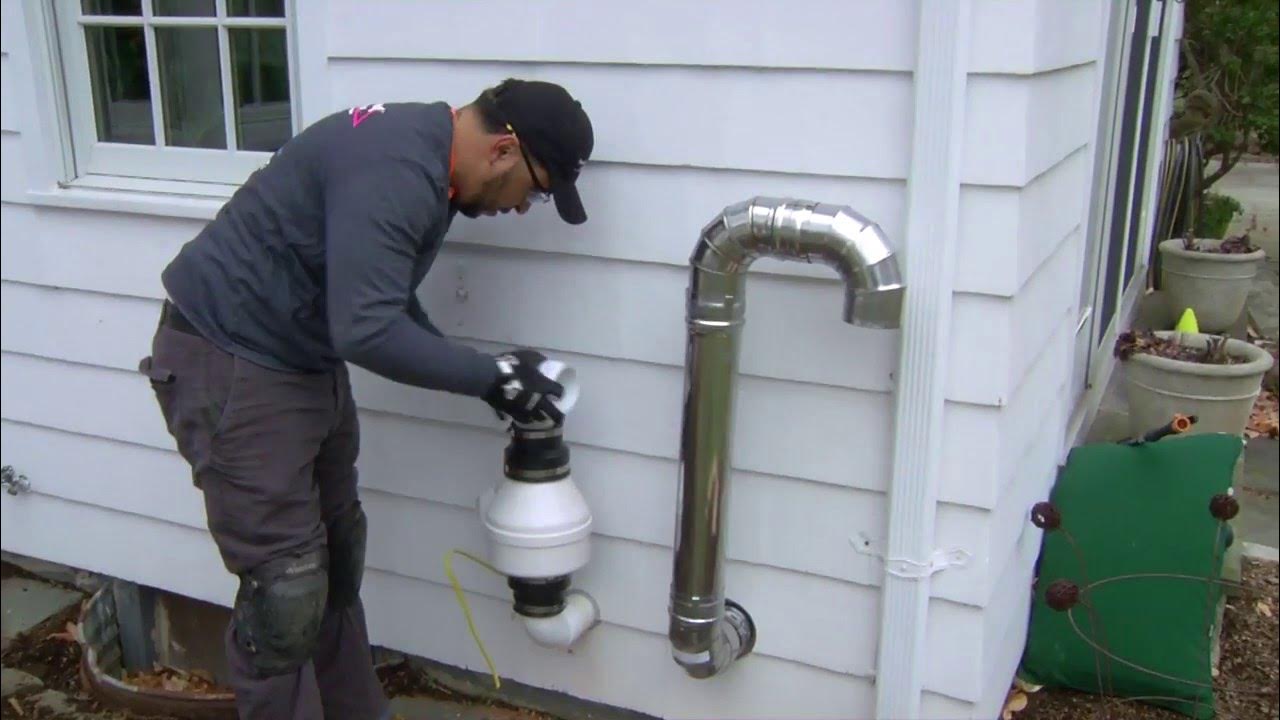Radon is a colorless, odorless radioactive gas that can seep into homes and buildings from the ground. Long-term exposure to high levels of radon can cause lung cancer, making it essential to test for this dangerous gas. But when is the best time to test for radon?
This article explores the optimal periods for radon testing, providing detailed insights to ensure your safety and peace of mind.
Table of Contents
Understanding Radon and Its Risks
Radon forms from the decay of uranium in soil, rock, and water. As a noble gas, radon can easily move through the ground and enter the air we breathe. According to the Environmental Protection Agency (EPA), radon is the second leading cause of lung cancer in the United States. Therefore, understanding radon and its risks is crucial for homeowners and building managers.
How Radon Enters Your Home
Radon gas can enter homes through cracks in floors, walls, and foundations. It can also be found in water supplies, especially if your water comes from a well. Common entry points include:
- Cracks in solid floors: Even small cracks in concrete or other solid flooring can allow radon gas to seep into your home.
- Construction joints: The joints between different construction materials, such as where a basement floor meets the foundation walls, can be a pathway for radon.
- Gaps around service pipes: Openings around pipes that enter your home can provide an easy entry point for radon.
- Cavities inside walls: Hollow spaces within walls can act as conduits for radon gas.
- Water supply: Radon can dissolve in water and be released into the air when you use water for activities like showering or cooking.
Understanding these entry points helps you identify areas in your home that may need attention when testing for radon.
The Importance of Testing for Radon
Testing for radon is the only way to know if your home has elevated levels of this harmful gas. Regular testing helps identify radon problems early, allowing for timely mitigation to reduce health risks. The EPA recommends that all homes be tested for radon, particularly if they are located in areas known for high radon levels.
Health Implications of Radon Exposure
Long-term exposure to radon increases the risk of lung cancer. Radon gas decays into radioactive particles that can get trapped in your lungs when you breathe. These particles release small bursts of energy, which can damage lung tissue and lead to cancer over time. Smokers and former smokers are at a higher risk of developing lung cancer from radon exposure due to the combined effects of radon and tobacco smoke.
Who Should Test for Radon?
- Homeowners: Every home should be tested for radon, regardless of its age or location.
- Home buyers and sellers: Testing is particularly important during real estate transactions to ensure that potential buyers are aware of any radon issues.
- Landlords and tenants: Landlords should test rental properties and inform tenants of radon levels.
- Schools and workplaces: Radon testing is also crucial in schools and workplaces to protect the health of students and employees.
When to Test for Radon
The timing of radon testing is crucial for obtaining accurate results. Radon levels can fluctuate due to various factors, including weather conditions and seasonal changes. Here’s a detailed look at the best times to test for radon:
Winter Months: The Optimal Time
Testing for radon during the winter months is generally recommended. During winter, homes are typically sealed up to conserve heat, leading to reduced ventilation and potentially higher radon levels. This makes it easier to detect elevated radon concentrations.
Why Winter Testing is Effective
- Closed Environment: Homes are sealed, reducing air exchange with the outside environment. This containment helps detect higher radon levels that might not be apparent during more ventilated seasons.
- Increased Heating: Heating systems can create a vacuum effect, drawing more radon into the home from the surrounding soil. This phenomenon, known as the “stack effect,” can lead to higher radon concentrations indoors.
- Stable Indoor Conditions: Consistent indoor conditions during winter provide a more accurate measurement of radon levels. The absence of significant ventilation changes helps ensure that the test results reflect the true radon levels in your home.
Spring and Fall: Alternative Testing Periods
While winter is ideal, spring and fall are also good times for testing. During these seasons, homes are less likely to have extreme ventilation changes compared to summer when windows are often left open. Testing in spring and fall can help detect seasonal variations in radon levels.
Avoiding Summer Testing
Testing during summer is less reliable due to increased ventilation from open windows and doors. This can lead to lower radon levels, providing a false sense of security. Additionally, summer storms and high humidity can affect radon levels, making it challenging to obtain consistent results.
Short-Term vs. Long-Term Testing
When deciding on the best time to test for radon, consider whether to use short-term or long-term testing methods. Each has its advantages and limitations.
Short-Term Testing
Short-term tests typically last between 2 and 90 days. These tests are useful for quick assessments but may not provide a complete picture of radon levels.
- Advantages: Quick results, useful for initial screening. Short-term tests can be especially helpful if you need rapid results, such as during a real estate transaction.
- Limitations: May not capture long-term radon level fluctuations. Short-term tests are more susceptible to temporary changes in radon levels caused by weather or home ventilation patterns.
Long-Term Testing
Long-term tests last for more than 90 days, providing a more accurate representation of radon levels over time. They account for daily and seasonal variations, offering a comprehensive assessment.
- Advantages: More accurate and reliable results. Long-term tests provide a better understanding of your home’s average radon levels, reducing the impact of short-term fluctuations.
- Limitations: Takes longer to obtain results. While waiting for long-term test results, it’s important to maintain awareness of potential radon exposure and consider preliminary mitigation steps if initial short-term results indicate high levels.
Steps for Effective Radon Testing
To ensure accurate results, follow these steps when testing for radon:
Choose the Right Test Kit
Select a radon test kit that is approved by national radon proficiency programs. Look for kits labeled “EPA listed” or certified by the National Radon Proficiency Program (NRPP) or National Radon Safety Board (NRSB). These certifications ensure that the test kits meet strict accuracy and reliability standards.
Place the Test Kit Properly
- Location: Place the test kit in the lowest level of your home where people spend time, such as a basement or ground floor. This is because radon levels are usually highest in lower areas of a home.
- Height: Position the kit at breathing level, typically 2 to 6 feet above the floor. This placement helps measure the radon concentration at the level where you and your family are most likely to be exposed.
- Avoid Disturbances: Keep the test kit away from drafts, high-humidity areas, and direct sunlight. Drafts and humidity can affect the test results, while direct sunlight can damage the test kit.
Follow Instructions Carefully
Read and follow the instructions provided with your radon test kit. Ensure the test is conducted for the recommended duration and conditions. It’s important to avoid moving the test kit during the testing period and to maintain the home’s normal living conditions to get accurate results.
Send the Kit to a Lab
After completing the test, promptly send the kit to the specified laboratory for analysis. Delays can affect the accuracy of the results. Most test kits include a pre-addressed envelope for easy mailing. Be sure to fill out any required forms with your contact information and test details.
Interpreting Radon Test Results
Once you receive your radon test results, it’s important to understand what they mean for your home’s safety.
Radon Levels and Health Risks
- Below 2 pCi/L: Considered safe by the EPA. Homes with radon levels below this threshold are generally considered to have a low risk for radon exposure.
- 2 to 4 pCi/L: Marginally elevated; consider retesting or mitigating. While levels in this range are not considered hazardous, the EPA recommends taking action to reduce radon if levels are above 2 pCi/L.
- Above 4 pCi/L: High risk; take immediate action to reduce radon levels. The EPA strongly advises mitigation efforts for homes with radon levels above this threshold to reduce the risk of lung cancer.
Next Steps if Radon Levels are High
If your home has elevated radon levels, consider the following mitigation options:
- Seal Cracks and Openings: Seal any gaps in floors, walls, and foundations to reduce radon entry. Use caulk and other sealants to close these gaps effectively.
- Increase Ventilation: Improve ventilation in your home to dilute radon concentrations. Installing vents or fans can help increase air exchange and reduce radon levels.
- Install a Radon Mitigation System: A professional can install a mitigation system to reduce radon levels effectively. These systems typically involve venting radon from beneath the home and safely releasing it outside.
Professional Help for Radon Mitigation
Hiring a qualified radon mitigation professional ensures that the mitigation system is designed and installed correctly. North Central Radon has the necessary training and equipment to assess your home’s radon levels accurately and implement the most effective mitigation strategies.
Conclusion
Testing for radon is a vital step in ensuring the safety and health of your home environment. By understanding the best times to test and following proper testing procedures, you can accurately assess and mitigate radon risks. Remember, the winter months provide the most reliable results, but alternative testing in spring and fall is also beneficial. Take action today to protect your family from the dangers of radon.




